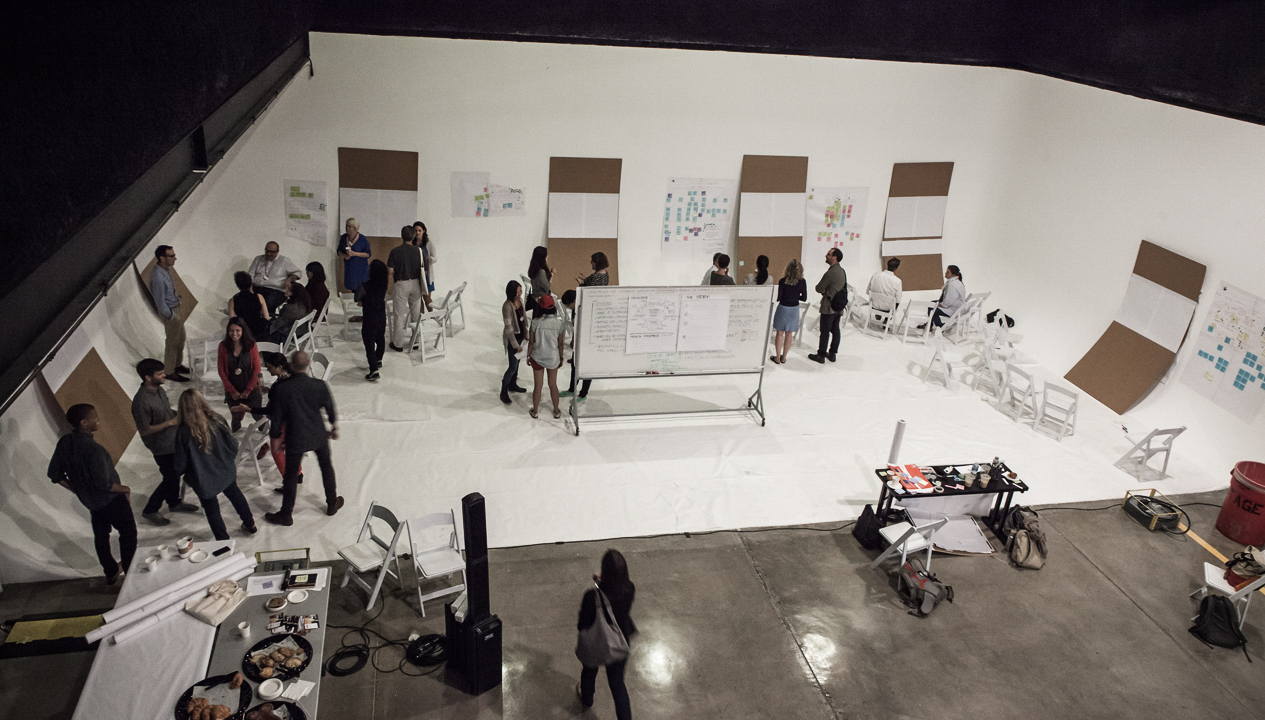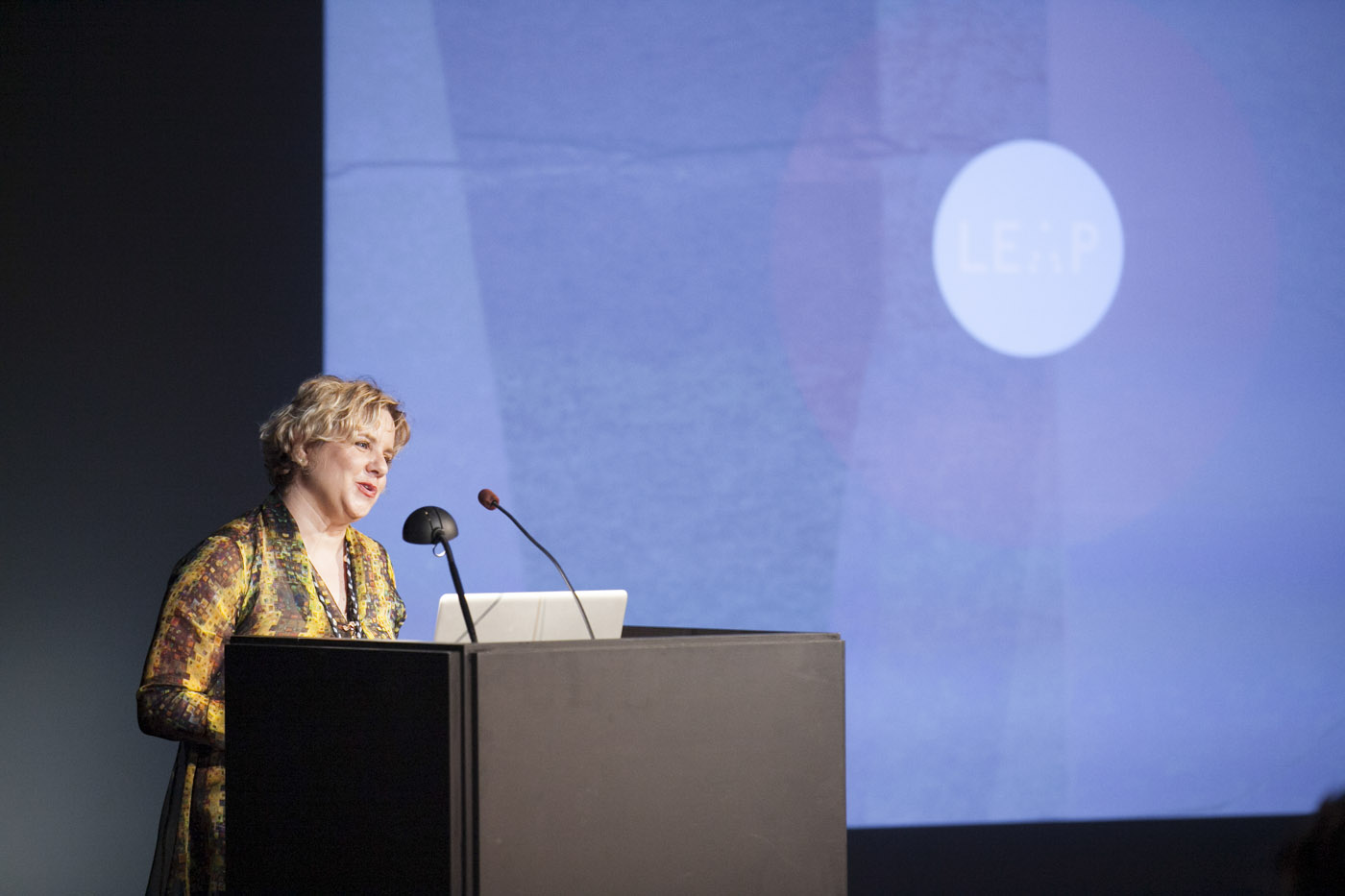On September 19, the Southern California sun beamed over the foothills of the San Gabriel mountains as approximately 125 designers, activists, foundation reps and corporate actors gathered to kick off the inaugural LEAP Symposium.

Here at the Hillside Campus of Art Center College of Design, home of one of the country’s leading social impact design programs — Designmatters — these movers, shakers and would-be participants in this emergent field were making a critical leap toward establishing a framework for what this type of design work encompasses, and the paths one might take toward making a career doing it. Participants in the three-day symposium, the first of its kind, represented notable ventures, organizations and institutions from across the country, and many have been (and are) involved in social impact projects here at home and around the globe. Although creative deviations were ultimately encouraged, Mariana Amatullo, the LEAP braintrust Allan Chochinov, Lee Davis, William Drenttel, Robert Fabricant, Jocelyn Wyatt, and Karen Hofmann who oversaw the facilitation programming for the symposium with Sherry Hoffman, had laid out an initial roadmap for the event.
First there would be discovery, workshops based on the college’s innovative Design Storm methodology, introductions and reconnections, hopes and wants and, of course, questions. Lots of questions. How can a designer make a living doing this? (“The opportunities to do the work are there, but is there a viable economy surrounding it?”) How can we demonstrate that the corporate world will benefit from this? (“How can we better document the outcomes we’ve achieved?”) And what exactly IS this? (“You can’t get people to understand what this thing is until there’s some commonly agreed upon way of describing it.” “Doesn’t ALL design have some social implication?”)
The sub-groups that were assigned to investigate different areas of consideration in this far-reaching exploration went about their business creatively, led by savvy design-thinking facilitators. In the process, participants both crystallized some of their own thoughts and ideas, and confounded everyone with new questions of what, when, where and how social impact design was manifesting itself, and had the promise to manifest itself in corners of the world near and far.
Some common themes were money, opportunity, recognition, desire. Can a designer make money in this field? Is there corporate, institutional, foundation money to support this type of design? Will there be more opportunities to practice in this space if I commit to it? Do or will the commercial and political powers that be recognize the validity of this work? How can social impact design advocates get others interested in working in this space?
If Day One shined a spotlight on innumerable, often unanswerable questions, Day Two brought further refinements and queries about possible courses of action. How can we develop sources of funding for social impact design entrepreneurs? How can we help delineate more traditional career paths (“because not everybody wants to be an entrepreneur”)? How can we create a better network of people working in this space? Document our outcomes as evidence of our value? What does the educational trajectory, and the attendant portfolio, look like to get into this space?
There were many elucidating moments shared among the participants, 60% of whom were designers, 40% of whom were not — at least in the traditional sense — with everyone bringing a valuable personal perspective. As in the sponsored projects that are a staple of Art Center’s curriculum, participating students got unfiltered access to the real-world drivers of the work they hoped to do after (and during) school, increasing their understanding not just of the work, but also of its perception and impact. Corporate, institutional and foundation partners were as often enlightened as they were enlightening.
Everyone spoke, everyone listened, everyone learned. It was like one massive mind-mapping mind-meld that left everyone with a desire to get out there and do more.
The special presentations, each day, of the real-world impact of people working in this space were especially inspiring. From our own inner cities (Humanim) to the developing world (SHE) and everywhere in between, these were awesome stories of people making a difference in the world, and concretely validating the field everyone was here to buttress.
Day Three ultimately left the halls of Art Center empty, but not before participants had each made a commitment to do something to further the cause. There were promises to build a bigger community; to raise awareness; to hire interns; to establish fellowships; to forge partnerships and alliances; to carry the flag of this important emerging field back home, wherever home was. Moreover, there was a universal commitment to do this again: to gather, to share, to inquire, to brainstorm. To attend (and even sponsor!) forums, conferences and symposia that promise to move social impact design, and understanding of it, ahead.
LEAP participants left Pasadena knowing that social impact design (and the unfolding career paths within it), if not yet broadly understood, is definitely not an island, but rather a rapidly spreading landmass that might one day buoy us all.
To learn more about LEAP Symposium click here.





